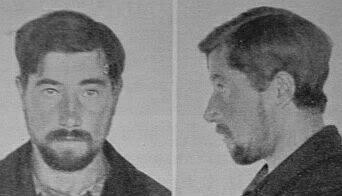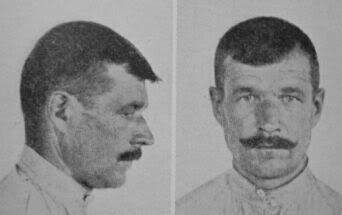|
|
Post by tyrannos on Feb 3, 2007 17:41:56 GMT -5
Three major types, the central Great Russian, the Polesian, and the Ryazan are considered by V. V. Bunak to be derived from a pigmented "Northern Pontic race," which he considers to be the northeastern branch of the Mediterranean race (cf. R. Biasutti, Le raze ei popoli della terra, UTET, Turin : vol. 2, p. 207): Russians of Northern Pontic type:   Russian of Ryazan type:  dienekes.ifreepages.com/blog/archives/000412.html dienekes.ifreepages.com/blog/archives/000412.html |
|
|
|
Post by tyrannos on Feb 3, 2007 17:43:42 GMT -5
More on the Pontic RaceCarleton S. Coon, The Races of Europe, 1939, p. 617 "In studying the racial composition of southern Russia, there was evidence of a moderately tall, long-headed, brunet Mediterranean form, which is concentrated along the northern shore of the Black Sea, but which also appears sporadically in the entire Russian population. To Western Europeans and Americans it is better known than its frequency would warrant, for it is exemplified by several world famous ballerinas and opera singers. This is the Mediterranean racial division which the Russian anthropologists call Pontic139 and which the Poles recognize as a very minor element in their own population. It is with little doubt of Neolithic date in southern Russia, Rumania, Bulgaria, and the Hellespont region, and probably in Greece and the Aegean. In most of Thrace it seems more basic than the Danubian, or at least more common." 139 Bunak, V., ZFMA, vol. 30, 1932, pp. 441-503 -- Renato Biasutti, Le razze ei popoli della terra, UTET, Turin, 1954, vol. 1, pp. 47-48 "Il B u n a k, per esempio, ha designato col nome di tipo Pontico i dolicoidi bruni della Russia meridionale, gia presenti, come hanno mostrato anche alcuni resti di capigliature, nei curgani medievali dell' alto Dniepr." Translation: B u n a k for example, has designated with the name of the Pontic type the brunet dolichoids of southern Russia, already present, as it has been demonstrated by remains of head hair in medieval kurgans of the upper Dniepr. -- Renato Biasutti, Le razze ei popoli della terra, UTET, Turin, 1954, vol. 2, p. 207 "Tre grandi tipi e precisamente il Grande Russo centrale, quello della Polesia e quello di Rjasan sono fatti derivare dal B u n a k da una razza pigmentata "pontica settentrionale", che egli considera quale ramo nord-orientale della stirpe Mediterranea." Translation: "Tree major types, and precisely the central Great Russian, that of Polesia and that of Ryazan are derived by B u n a k from a pigmented "Northern Pontic" race, which he considers as the northeastern branch of the Mediterranean race." -- M. G. Abdushelishvili, "Certain Problems of Ethnic Anthropology in Southwest Asia in the Light of the Latest Research." in Physiological and Morphological Adaptation and Evolution, Mouton, 1979. "The Pontic type in the population of the northern Caucasus was first identified by Bunak (1932) who related it to the Mediterranean branch of the Europoid race in the absence of admixture with the northern branch of Europoids (Bunak 1956). Debets (1958) determined the place of the Pontic type among the European groups of anthropological types. In his chart the Pontic type is shown as a transitional form resulting from mixture between the main subdivisions of the Europoid race. Another point of view on the shaping of the Pontic type was expressed by Alexeev (1974), who made the following main points: "The Pontic type was formed in the framework of the Mediterranean branch of the Europoid race, without the participation or admixture of the northern branch. The basic process of forming that type is the gracilization of the massive, protomorphic type." One must agree with Bunak and Alexeev that the Pontic race belongs to the southern branch of Europoids, without admixture of northern elements. We contend that Alexeev is also right when he states that the peoples related to the Pontic type are descendants of the most ancient population of the northern Caucasus. As to the emergence of the Pontic type as a result of the gracilization of the ancient, massive type of Europoid race which, according to the writer, provided the basis for the emergence of the Caucasian type, we disagree (Abdushelishvili 1964). Therefore we shall here merely note our contention that the development of the local Caucasian paleoanthropological types whose roots can be clearly traced in the ancient craniological series in the territory of the Caucasus." dienekes.ifreepages.com/blog/archives/000414.html
|
|